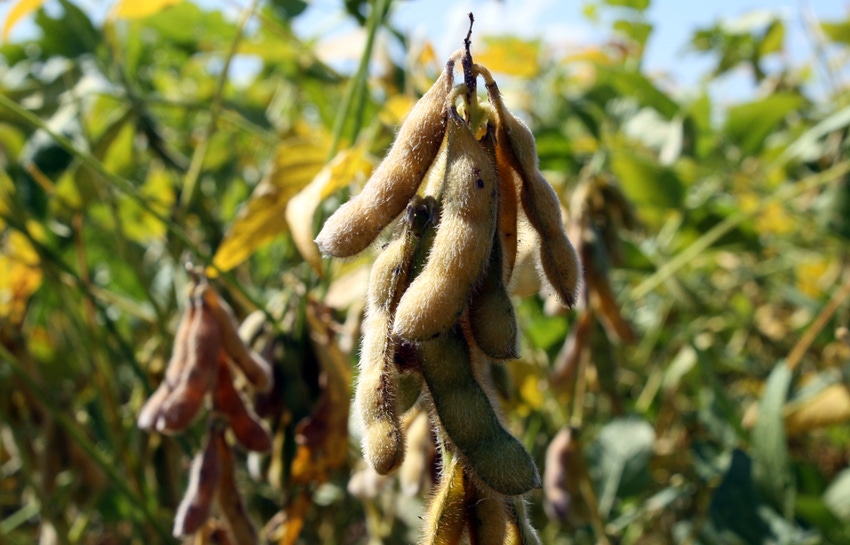
The idea of an early production soybean system using indeterminate varieties has been around for decades, but it wasn’t a particularly economic way to grow soybeans in the Southeast. But old can be new again, and what didn’t work once might have a shot now, say some soybean experts.
John Woodruff, retired University of Georgia Extension soybean agronomist, says the EPSS is growing in popularity, or at least drawing questions, from growers in Georgia. He advised a dozen Georgia growers on the EPSS this year, mostly in cooperation with Southern States agronomist Eddie McGriff.
For growers who are able to do things right and on time, “they were making yields between 80 and 90 bushels per acre, and three or four who were able to hit 90 to 95 bushels per acre. Some growers probably did some things that didn’t contribute to yields but just added to the cost of production. Two of the growers had a variety that was a little later than the others and grew too tall and had some lodging problems. Then it started raining (in September), and they couldn’t get to the field until October. By that time they had some serious quality problems as well as some reduced test weight,” Woodruff said.
Woodruff this year tested Pioneer, Southern States, Monsanto and Bayer soybean varieties. The indeterminate varieties with a maturity range between 4.7 and 5.0 were the best yielders.
“In a little test I did on my home place when planting April 20, the indeterminate varieties that were not late maturing and were not growing too tall averaged 80 to 95 bushels per acre in a four-rep test. Those that were later and taller growing lodged badly and didn’t yield as well,” he said. “So, we still have some tweaking to do to get the best varieties, population, cultural practices …
“But I am very encouraged, because in the past with traditional beans (under irrigation) we topped out (in Georgia) around 80 bushels (per acre) but more realistically with good efforts we stayed around the 70-bushel range. … But here we have a system where a grower can advance yields by 10 to 15 percent,” said Woodruff, who added the EPSS does haves some red flags to watch for.
Small harvest window and other red flags
The biggest red flag to overcome, particularly this year due to wet conditions, is timely harvesting of the early maturing soybeans, which puts harvest at the first of September. The beans can go through a rapid decline once mature, leaving only a 10-day to two-week window to harvest them and capture optimal quality and test weights.
This early system approach to soybeans is not new, Woodruff said, or new to the Southeast. Two decades ago when he was still the Georgia Extension soybean specialist “out of curiosity” he got some growers to try the early system approach at that time. “But the problem we had then was that even when the beans were harvested timely, we were not getting acceptable seed quality. And I will say that there has been a lot of progress made with newer varieties. And there are varieties available to the farmer now that have good seed quality when they are harvested right after maturity,” Woodruff said.
Woodruff said root-knot nematode pressure is a problem for some Southeast growers in achieving higher yields, but there are now varieties available with good resistance to root-knot nematodes. “I think with what seems to be a growing popularity of this early system, I think we’ll see several newer and potentially better resistant varieties in the next two to three years becoming available,” he said.
Dan Poston is the Pioneer agronomy research manager for Mid-South and Southeast, and he says companies are starting to invest more in soybeans for the Southeast market. “I think you’ll start to see some products start to really help the Southeast. There really are some monumental gains being made in soybean genetics now.
“We know in the Southeast to compete with corn and peanuts and with irrigated cotton, we’ve got to consistently grow 80-bushel beans,” said Poston. “And that’s the premise … to work with these growers and build programs that can reach that with reasonable inputs and not throw the kitchen sink at it.”
Poston visited Norman’s farm to provide a soybean yield estimate there the same day he visited Randy Dowdy, the Brooks County, Ga., best known for being a high yield champion, one who hit a 503-bushel average to be the nation’s top corn yielder last year and who clocked a 100-bushel-plus average on soybeans last year.
One obstacle growers face on their way to whatever higher soybean yields they want to achieve is appreciating the nutrient demand it requires to add bushels to acres, and have those nutrients available for the plant when it needs it. For a quick example, he said, to reach 80-bushel beans, the crop needs 30 pounds of sulfur at a minimum.
Though there are similarities in the regions when it comes to growing soybeans, the Southeast is not the Mid-South, where growers have been using with success indeterminate varieties and additional care to consistently reach higher soybean yields.
“I’ve received far more calls than I used to about high-yield beans in the Southeast, and multiple calls from folks in Georgia wanting me to look at beans or estimate yield or asking what to plant to make it work,” Poston said, who added the potential for higher-yielding soybeans in the region is doable and happening now. “But I also tell growers to be prepared if it doesn’t work.”
About the Author(s)
You May Also Like






